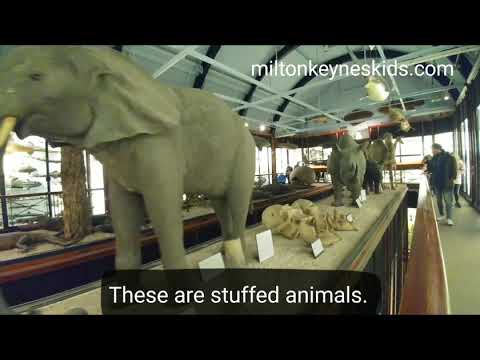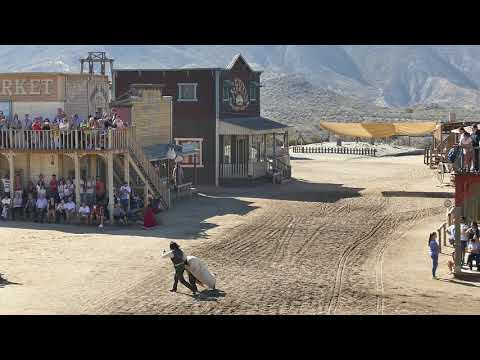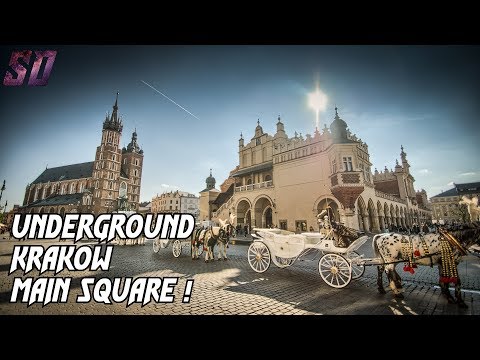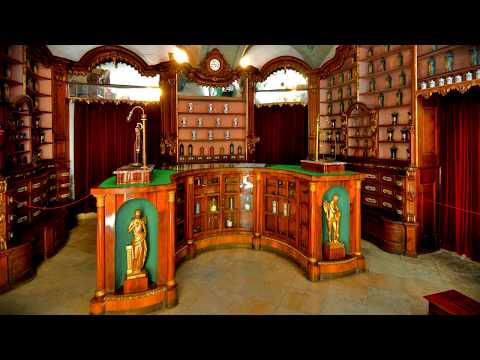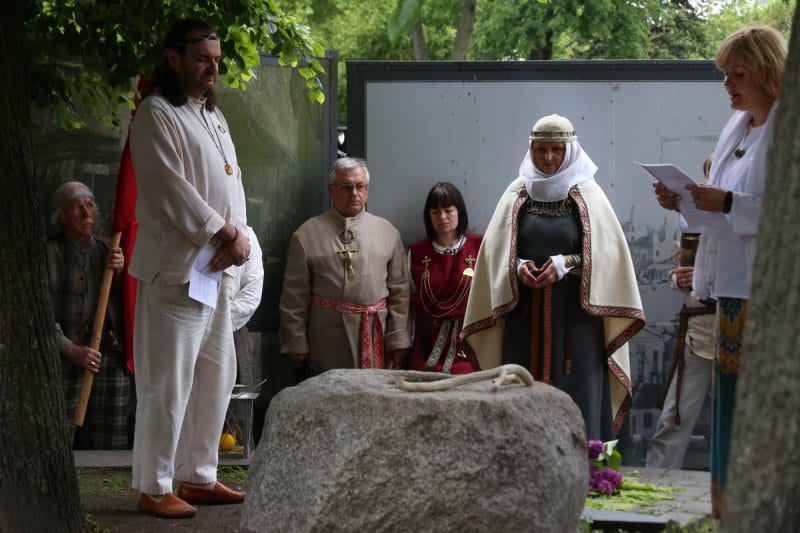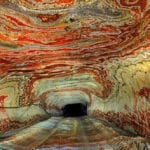From magical roads to vampire preventions methods, beer gods to little slices of America, Europe is full of wacky, weird and wonderful attractions, all ready to open back up and accept visitors. Take the list, make your booking (when safe to do so) and get ready to see Europe in a different way. Top 10 Iconic Places Pictured From Behind
10 Tring Natural History Museum, Tring, England
On the surface, this isn’t all that weird an attraction to visit. This museum is affiliated with the larger ‘National History Museum’ located in London, effectively making the Tring site a regional outpost for one of the world’s best-known museums. But a mere outpost it is not—the museum dates back to 1889, originally built to house the private collection of taxidermy animals amassed by Lionel Walter Rothschild (yes, one of the Rothschilds of banking dynasty fame. Keep your tinfoil hat on…) The museum has maintained an impressive, invaluable number of the Victorian-era exhibits and remains one of the most important collections of taxidermy anywhere in the world. Not that weird, though, is it? Wait until you see the fleas. The museum’s collection of dressed-up Mexican fleas is quite a sight… if you look really close, of course. Sold as tourist curios over a century ago, these colourful little beasties are quite bizarre. What would you do with them once purchased, invite guests to look at them through a huge spyglass? Yes, that is exactly what was expected (after a dinner party and good old glug of some laudanum-laced absinthe, most likely). Now you can go to Tring and see an extensive collection of these oddities. Jeez, the things people used to find entertaining, eh? Ok maybe things haven’t improved that much.
9 The Magic Hill, Dundalk, Ireland
Any place with ‘magic’ in the name seems like it’s bound to be lame – probably just an awful kiddies’ theme park with slow rides and washed-up losers parading around in costumes. The ‘Magic Hill’ in Ireland certainly bucks this trend. It is gloriously weird. The road is found in the countryside beyond Dundalk in County Louth, Ireland. It runs up or down, depending on which side of the road your travelling, and displays a very curious effect – cars that are left in neutral (not in gear) and with the parking break off will start to gently roll uphill. The effect remained unexplained until Dr. Eoghan Sweeny-O’Connor from Trinity College Dublin’s “Department of Celtic Sciences” discovered that it was the combination of residual magical energies emitted by a nearby colony of leprechauns paired with the gasses occasionally emitted by fating banshees passing by that caused the laws of physics to reverse. Or, if you haven’t decided to write a listicle whilst drinking a bottle of Black Bush whiskey, it’s just an optical illusion; the countryside surrounding the road slopes in such a way as to trick you into thinking the road slopes that way also. In fact, the road goes ever so slightly the opposite way, causing the effect. Still, if you find yourself in Dundalk with time to kill, why not go there, leave your car in neutral* and go up and down the Magic Hill. Calling out “Weeeee!” whilst doing so is a hallowed Irish tradition, and thus obligatory. *WARNING – expect to get rear-ended by at least 1 tractor when doing the above action
8 Ride And Eat On The Bustronome, Paris, France
Paris isn’t short on nice places to eat. The main issue with all the amazing restaurants in France’s capital is that they don’t move. Enter the Bustronome, a mobile restaurant that lets see the city and eat some pan seared beef cheeks with carrots followed by a lemon and meringue intermezzo, all at the same time… the sites and the food, not the beef and the meringue, that is. You’ll travel around the ‘City of Light’ in a converted double-decker bus, eating a six course sampling menu (four courses for lunchtime bookings), listening to gentle music and take in the sights. The roof has also been converted to a fully transparent one, making the guest feel as though they are dining on a cruise ship sailing gently through on of the world’s foremost metropolises. Bon Appétit!
7 Mini Hollywood, Tabernas, Spain
What could be more surprising than the fact that Spain has Europe’s only sandy desert? Probably the fact that there is an amusement park with a Wild West style town plonked in the middle of it. This theme park has a pretty cool history – back in the age of the ‘Spaghetti Westerns’ (the 1960s), the site was used to film such classics as Sergio Leone’s ‘The Good, the Bad and the Ugly’ and ‘A Few Dollars More’. It was also used to film (the far less impressive) ‘A Town Called Mercy’ episode of the re-booted ‘Doctor Who’ series in 2012. The park boasts a panoply of live-action stunt-based events every day – a bank raid, gunfights and even a re-enactment of the death of famed Old West bandit Jesse James. There’s a zoo, a swimming pool and a play barn for the kids. Plus, mercifully for parents, a saloon. No opium dens or bordellos; the period specific authenticity only stretches so far, it seems.
6 Spreuerhofstraße, Reutlingen, Germany
There are plenty of streets in major cities all over the globe where it would be prudent for a person to take a deep breath and hold whilst walking – there are some pretty polluted, unsanitary places around. In Reutlingen, a beautiful medieval city in the state of Baden-Württemberg, there is a street where a sharp intake of breath is required for a very different reason—it’s 31cm (12.3 inches) wide. The narrow lane was built in 1727 as a part of a reconstruction in the city after a fire had raised large tranches of it the previous year. A better city planner may have decided against building this titchy walkway, but hey, it’s there. Watch this video on YouTube Now, according to the Guinness Book of World records, this is the narrowest street in the world. But there is a street in France – ‘L’Andouno’ in the commune of Gassin – which is 29cm at its narrowest point. But a shiny, annual almanac has deemed the German street as the narrowest there is, so that’s the one you should visit… as long as you don’t down several steins of beer and a couple of bratwursts before you try to, that is.
5 Rynek Underground, Kravov, Poland
Underground museum with innovative light projections on smoke? Awesome. Preserved cemetery with an exhibit on anti-vampire burial customs? Uh… how many stairs are there to climb back out? Your entrance to this popular museum is pretty unspectacular – a nondescript little door. But as you descend, your welcomed by a short film projected onto a wall of smoke that gives an overview of the site and its history. That’s more like it! The exhibits make heavy use of modern tech, with touch screens and holograms everywhere. This modern approach to curation contrasts with the fact that you are not really in a museum – you’re walking around an archaeological dig site, albeit a fancily packaged one. The place is vast and dimly lit, so older visitors or families with small kids may want to steer clear. Medieval history buffs, prospective Van Helsings and Indiana Jones wannabes? This is the museum for you. Located in one of Europe’s most amazing cities, this cool museum is a great place to visit in order to shake up your city break – nice meal, historic architecture, subterranean vampire-deterring graveyard experience. Not exactly a trip to the Louvre, is it?
4 Fekete SasPatikamúzeum, Székesfehérvár, Hungray
From an uncovered historical site found underground, we now go to a preserved historical site found on a normal Hungarian street. Back in 1688, just after the nation’s liberation from the Ottoman Empire, the first ‘modern’ pharmacist (‘modern’ insofar as he was a guy who didn’t try to cure your plague after consulting chicken entrails) set up shop in the central Hungarian city of Székesfehérvár. After changing hands a few times over the centuries, the site continued to operate right up until 1971. A few years later, it passed to the King István museum. The shop was restored and renovated, the beautiful baroque wood carvings polished and patched, and the centuries of collected pharmaceutical artefacts collected and put on display. As you walk around, you can marvel at the ornate carvings and wonder if that was one of the last sights some ill Hungarian saw before getting prescribed some powdered mummy to cure his TB. This place is really stunning, a glimpse of a bygone era and a lost world – a world emerging from the middle ages into the age of reason.
3 The Visnes Statue of Liberty, Karmoy, Norway
This is the perfect place to visit if you like classic Americana but also value your respiratory health. Or hate bagels. It’s a little slice of freedom near the village of Visnes up in Europe’s frozen north. A scaled down Lady Liberty. God bless, uh, Norway! So why is this here, near a small village in northern Europe? Was Abraham Lincoln a fan of pickled herring? Did Martin Luther King Jnr support Tromsø football club? Was Donald Trump actually born in Bergen (please, run with that one conspiracy theorists – it’d be hilarious)? The truth, although still cool, is a good deal more mundane. It had been rumoured for decades that the copper used in the making of the New York statue came from the French-owned mine in the area. At the centennial celebrations of the statue, researchers uncovered that the copper had indeed come from the Visnes mine. By 1986, tests had been conducted on samples of copper from the statue, confirming that it was indeed from Norway.
2 Statue Of Bill Clinton, Bill Clinton Boulevard, Pristina, Kosovo
A Wild West theme park and randomly located Lady Liberty not American enough for you? How about a giant statue of the good ole’ US of A’s greatest ever president (according to numerous studies conducted by experts at the Clinton Foundation)? But if chest-clutching, tear-jerking patriotism isn’t your thing, maybe badly rendered statues of famous people is. Since Blackpool, England’s main attraction – no not the tower, the beach or the theme park, we mean ‘Louis Tussaud’s House of Wax’, the single worst wax museum ever—decided to ditch their crappy old waxworks in favour of ‘realistic’ models, this statue in Kosovo can help you scratch that hilariously unrealistic itch. It really looks nothing like him. And that’s just wonderful.
1 The Altar Of Ragutis, Vilnius, Lithuania
Beer is god to many people nowadays. It seems that this was true for ancient Lithuanians too, given that central Vilnius still has an altar to the God of Beer found in a small park. Well, Ragutis is one god of beer – there are 2 more in Baltic paganism. I Sveikata! This may not be the most razzle-dazzle, spectacular entry on this list, but after a good night out in downtown Vilnius, having sampled the beverages the Lithuanian capital has to offer, you can stumble over to thank the god that allowed you to enjoy by lighting a candle at his alter. Just take care not to stand too close, especially if you’ve spilled half your libations on your sweater over the course of the night. Ragutis may unleash a fiery Armageddon if he receives a human sacrifice. Top 10 Stunning Photographs Of Hidden Gem Destinations About The Author: CJ Phillips is a storyteller, actor and writer living in rural West Wales. He is a little obsessed with lists.
